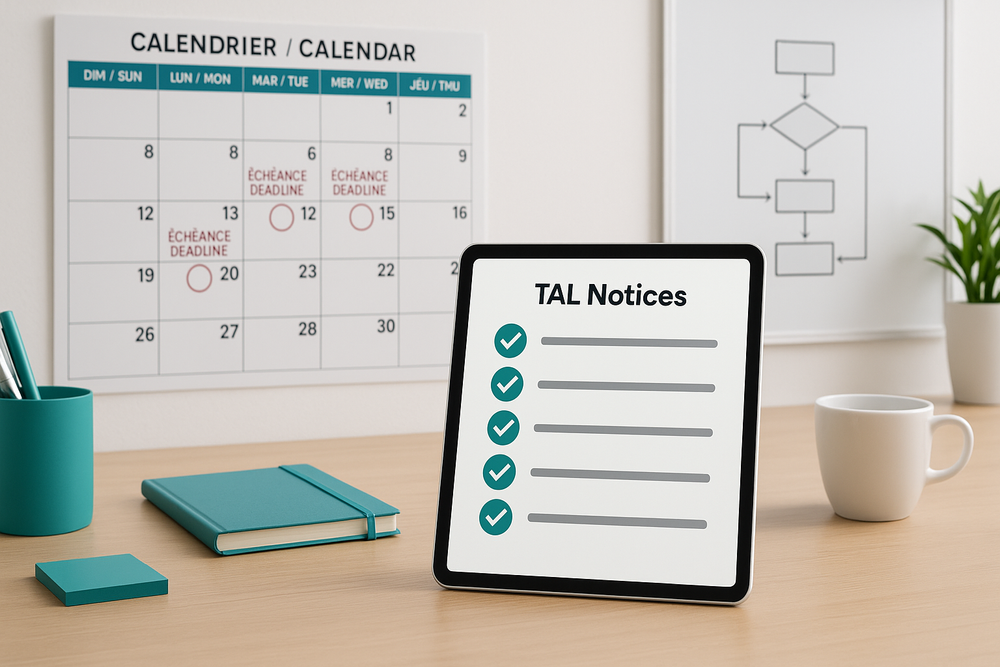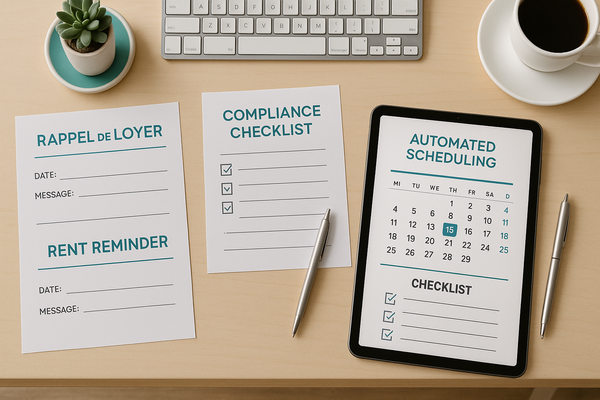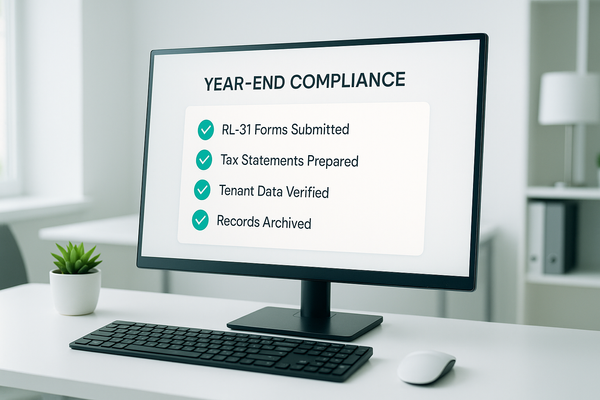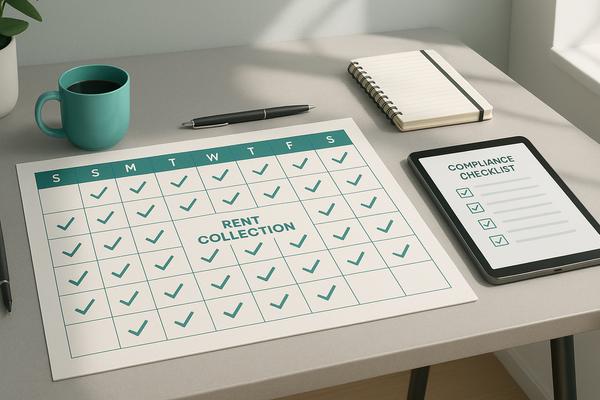TAL Notices Automation: Cut Admin Time & Eliminate Compliance Risk
Struggling with the constant pressure of managing TAL notices manually while juggling vacancies, tenant communications, and strict compliance deadlines? This isn’t just tedious paperwork—it’s a serious risk that can cost you time, money, and reputation, especially given Québec’s specific TAL regulations and bilingual requirements. Without a streamlined process, your team faces bottlenecks that slow collections, increase legal exposure, and burn out your staff.
That’s where TAL notices automation comes in. By automating these time-sensitive notices, you can slash administrative hours, reduce costly errors, and keep your operations fully compliant. This means less chasing paperwork, fewer missed deadlines, and more focus on growing your portfolio efficiently. WorkflowLeaf’s proven approach helps you implement tailored workflows that integrate smoothly with your existing systems, ensuring your team spends less time on manual tasks and more on strategic priorities.
In this article, you’ll learn practical steps to automate TAL notice handling, reduce compliance risk, and reclaim valuable time—so your property management business can scale confidently with less hassle.
The High Cost of Manual TAL Notice Management
Administrative Drain and Burnout
Handling TAL notices manually is a significant drain on your team's time and resources. For many property managers, the process involves hours spent sifting through spreadsheets, setting calendar reminders, and drafting individual notices. This repetitive work not only consumes valuable time that could be spent on tenant relations or growth but also leads to staff burnout and a higher risk of human error.
Many off-the-shelf software solutions fall short because they lack workflows specifically designed for Québec’s unique rental laws. This means manual double-checking persists, creating data silos and hampering scalability. What works for a handful of units quickly becomes unmanageable as your portfolio grows, even though automating repetitive administrative tasks is a primary driver for adopting new technology.
Critical Compliance and Financial Risks
Failing to meet Québec’s strict TAL regulations exposes your business to serious legal and financial penalties. This is a significant concern, as around 60% of property managers report that compliance regulations have increased their workload, according to the '75+ Property Management Statistics: Digital Revolution (2025)'. Late or incorrect rent increase notices can invalidate the increase, leading to lost revenue and costly legal disputes.
These errors often stem from manual tracking mistakes or misinterpreting complex legal timelines. The challenge is compounded by the legal requirement for bilingual notices, where manual translation and formatting can introduce inconsistencies. Beyond legal fees, inefficient notice processing can delay rent collection and extend vacancy periods, directly impacting your bottom line.
Key Benefits of Automating TAL Notices
Slashing Admin Time with Tailored Workflows
Tailored automation transforms the tedious, manual process of managing TAL notices into a streamlined, hands-off workflow. Instead of drafting, reviewing, and sending each notice by hand, the system handles every stage automatically by pulling data directly from your existing lease management tools. For example, when a rent increase is due, the automation can instantly generate a formal bilingual notice, verify the legal notice period, and schedule it for delivery—saving your team hours each week. This is a critical benefit, as a report from the National Apartment Association highlights that 69% of leadership and 55% of staff wish they had more time to focus on higher-level tasks (Source: 'The Intelligence of AI’s Time-Saving Benefits').
Automated deadline tracking is a game-changer. You can set up alerts that notify your team when a notice is due or if a tenant hasn't acknowledged it, eliminating the need for manual follow-ups and ensuring no deadline is ever missed.
Reducing Compliance Risk Through Built-In Validation
TAL notices automation can include validation steps within your workflow—such as checking for missing legal phrases or ensuring both French and English sections are included. While not all errors can be caught automatically, carefully prepared templates and consistent processes greatly reduce the risk of mistakes and non-compliance.
As notices move from drafting to dispatch, your team can access status updates and logs through a simple dashboard—most often built in Airtable, or adapted to your preferred CRM when possible. Each key action (such as form creation, updates, and sent status) can be automatically recorded in a logging table, providing a reliable history of events. While advanced dashboards can be configured for Airtable users, reporting and audit trails can also be customized to your chosen tools and processes.
Seamless Integration with Existing Property Management Platforms
Automation is most powerful when it connects smoothly with the systems you already use. Whether it's a lease management platform, rent collection tool, or tenant database, automation workflows can often sync data seamlessly. In most cases, this means pulling data from a custom Airtable dashboard or another compatible CRM you already use. When an upcoming rent increase is detected, the automation can pull the relevant details and trigger the TAL notice process—removing manual data entry where possible. For more specialized systems, custom integration is available on a case-by-case basis.
The goal is to enhance your daily routines, not disrupt them. You retain full control over communications and scheduling, but with the added reliability of automated guidance and alerts. This approach helps you to scale your operations efficiently while lowering compliance risks—a key outcome, as improved operational efficiency is the top benefit (cited by 63% of firms) realized from PropTech adoption (Source: 'Survey Results Show Power of Property Management Technology').
Real-World Examples and Best Practices
Case Study: Slashing Admin Hours and Risks
Imagine a residential property manager in Québec overseeing dozens of tenants. Before automation, their team spent hours each month manually drafting, translating, and sending rent increase notices. They constantly battled tight deadlines and the risk of bilingual inaccuracies, leading to staff burnout and potential legal exposure.
After adopting tailored automation for TAL compliance, their process was transformed. The system now automatically generates and dispatches bilingual notices according to Québec law, triggered by approaching rent increase dates. The manager no longer has to manually track deadlines or handle translations.
The results were immediate and impressive: admin hours spent on TAL notices dropped by over 70%, freeing up the team to focus on tenant relations and growth. Compliance incidents plummeted, significantly reducing legal risk. This aligns with broader trends, as a study on workflow automation found that organizations implementing such systems report an average cost reduction of 24% (Source: 'Workflow Automation Statistics & Trends For 2024').
Practical Tips for Flawless Bilingual Notices
To handle Québec’s bilingual requirements efficiently, start by creating reusable, pre-approved templates in both French and English that include all necessary legal phrasing. Your automation system can then populate these templates with tenant-specific data—names, addresses, and rent amounts—ensuring accuracy and consistency without manual effort. This simple step eliminates translation errors and ensures every notice is professional and legally sound.
Automate the delivery through preferred tenant channels, like email or a tenant portal. You can still add a personal touch by referencing specific lease details, which helps maintain strong tenant relationships while keeping the process standardized and efficient.
Leveraging Reporting for Proactive Compliance
Use a central dashboard, often powered by Airtable or your preferred CRM, to get visibility into your TAL notice workflow. Track which notices have been scheduled, sent, opened, and acknowledged at a glance. This allows you to spot and address potential delays before they become problems. Set up automatic alerts for overdue notices or incomplete workflows to prompt your team for timely follow-up.
The system maintains a log of key actions—such as form creation, updates, and dispatch—so you have a reliable record of key events. For clients needing a more detailed audit trail, additional tracking and reporting can be configured. In the event of a dispute or audit, you can instantly produce documentation showing your process was timely and compliant, giving you complete peace of mind.
Your Quick-Win Checklist to Start Automating TAL Notices
- Map your current process: Identify recurring delays, manual data entry errors, and missed deadlines in your existing TAL notice workflow.
- Choose a compatible tool: Select an automation solution that integrates with your current property management system and supports Québec’s legal and bilingual requirements.
- Design your workflow: Define triggers (like lease renewals) and map out each stage, from drafting and validation to dispatch and confirmation.
- Set up alerts and checks: Implement automatic deadline reminders and configure validation rules to catch errors before notices are sent.
- Train your team: Focus training on how the new system reduces manual work, improves accuracy, and frees up time for higher-value activities.
- Monitor key metrics: Track KPIs like time saved and error reduction, and use the data to continuously refine your automation rules.
- Maintain compliant templates: Keep your bilingual notice templates updated with current legal language to ensure ongoing compliance and clear communication.
- Schedule periodic audits: Regularly review your automated workflows to catch any gaps and ensure your process remains optimized and compliant.
Your Path to Property Management Efficiency
Ultimately, managing TAL notices doesn't have to be a source of administrative drain and compliance risk. With tailored automation, you can transform this complex process into a streamlined, reliable workflow that protects your business and frees your team to focus on scalable growth. It’s time to move beyond manual checklists and one-size-fits-all tools that can’t handle Québec’s specific legal nuances. Escape generic software limits. Ready to see how TAL automation can work for you? Book your personalized assessment—or just reach out for a chat about your current process.
Disclaimer / Transparency Statement
WorkflowLeaf is committed to making TAL compliance and administration easier for Québec property managers through practical automation. While our current solution focuses on automating TAL notice creation, form population, and event logging—most often through Airtable or compatible CRMs—additional features like advanced dashboards, multi-platform integration, and automated mailing can be configured for select clients as needs evolve. The information above describes best practices and possible capabilities. If you have specific requirements, reach out for a personalized assessment to see what’s available for your business today.



